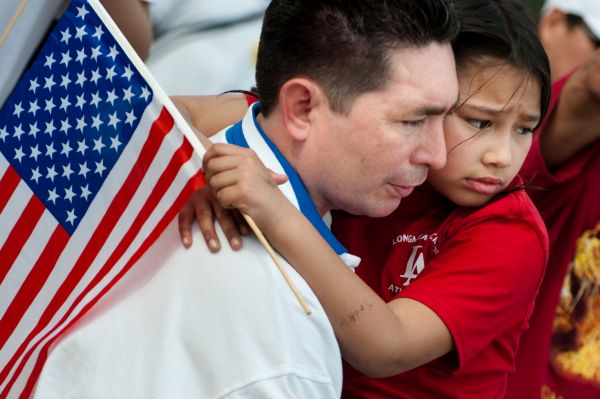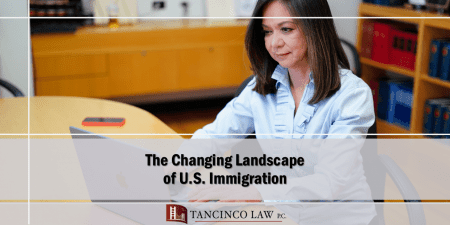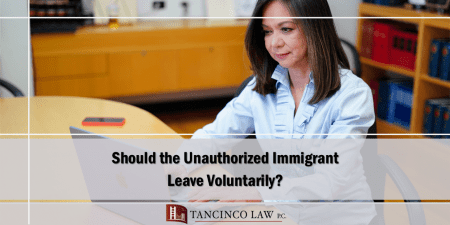This article discusses the nature and consequences of “self-deportation,” a term prominently encouraged by the Trump administration for undocumented or unauthorized immigrants residing in the United States. “Self-deportation” is not a formal legal term defined within the Immigration and Nationality Act (INA). Instead, it describes the act of an individual with no legal status departing the U.S. on their own initiative, often in response to heightened interior enforcement and policies designed to make life untenable.

An immigrant who “self-deports” by simply leaving the country faces severe and lasting legal consequences. The most significant of these is the triggering of statutory bars to re-entry, potentially for three years, ten years, or permanently. Furthermore, by leaving, the individual may forfeit the right to pursue various forms of legal relief from removal for which they might have been eligible, such as asylum or Cancellation of Removal. This brief will analyze the legal framework surrounding self-deportation, its distinction from formal legal processes like Voluntary Departure, and the profound, often irreversible, consequences of such a decision.
The Nature of Self-Deportation
“Self-deportation,” as a policy concept, operates on the principle of “attrition through enforcement.” The goal is to create a sufficiently difficult and fearful environment that undocumented immigrants choose to leave the United States “voluntarily,” thus bypassing the formal, and often lengthy, removal process in immigration court.
It is crucial to distinguish this informal act from two recognized legal procedures:
- Voluntary Departure (INA § 240B): This is a form of relief granted by an Immigration Judge or agreed upon with the Department of Homeland Security (DHS). An individual granted Voluntary Departure agrees to leave the U.S. at their own expense by a specified date. In exchange, they avoid a formal order of removal on their record, which carries its own separate bar to re-entry. However, failure to depart as promised results in severe penalties, including a civil fine and a 10-year bar to several forms of immigration relief. Importantly, Voluntary Departure does not erase any inadmissibility bars based on prior unlawful presence.
- Stipulated Removal: This is an agreement between an individual and DHS in which the individual concedes they are removable as charged and waives their right to a hearing before an Immigration Judge. In exchange, a final order of removal is entered. This is often seen as a way to exit immigration detention more quickly, but it results in a formal deportation order with all its attendant consequences.
“Self-deportation” is distinct because it typically occurs outside of any formal court or administrative process. The individual simply leaves. While this may seem to offer more personal control, it is fraught with legal peril, as the departure itself is the event that can trigger significant legal penalties.
Legal Consequences of Self-Deportation
The most critical consequence of self-deportation is the triggering of inadmissibility bars under INA § 212(a)(9). These bars are activated by the act of departing the United States after a period of “unlawful presence.”
- Definition of Unlawful Presence: An individual accrues unlawful presence if they are in the U.S. without being admitted or paroled, or if they remain beyond the expiration of their authorized period of stay.
The primary inadmissibility bars are:
- The 3-Year Bar (INA § 212(a)(9)(B)(i)(I)): An individual who accrues more than 180 days but less than one year of continuous unlawful presence and then voluntarily departs the U.S. is barred from being readmitted for a period of three years from the date of their departure.
- The 10-Year Bar (INA § 212(a)(9)(B)(i)(II)): An individual who accrues one year or more of continuous unlawful presence and then voluntarily departs or is removed from the U.S. is barred from being readmitted for a period of ten years from the date of their departure or removal.
- The Permanent Bar (INA § 212(a)(9)(C)): This applies to individuals who accrue more than one year of unlawful presence in the aggregate, or who are ordered removed, and then enter or attempt to re-enter the U.S. without being lawfully admitted. While labeled “permanent,” an individual may be eligible to apply for a waiver, but only after having been outside the U.S. for at least 10 years.
These bars are automatic. Choosing to “self-deport” does not avoid them; on the contrary, the departure is the very act that makes them effective. Any suggestion that self-deportation will “preserve your opportunity to potentially return the legal, right way” is legally misleading, as it fails to account for these statutory bars which immediately complicate any future legal return.
Forfeiture of Legal Rights and Relief
By departing the United States, an undocumented immigrant automatically and irrevocably forfeits their right to pursue any form of immigration relief or protection that requires physical presence in the U.S. These include, but are not limited to:
- Cancellation of Removal (INA § 240A(b)): This is a defense against deportation for certain non-permanent residents who can demonstrate, among other things, ten years of continuous physical presence in the U.S. and that their removal would result in “exceptional and extremely unusual hardship” to a U.S. citizen or lawful permanent resident spouse, parent, or child. Departing the U.S. breaks the continuous presence requirement and renders an individual ineligible.
- Adjustment of Status: For individuals who may have become eligible for a green card (e.g., through marriage to a U.S. citizen or an employment petition), leaving the U.S. can terminate their pending application and subject them to the 3/10-year bars, severely complicating or preventing their legal return.
- Right to a Hearing: Every individual placed in removal proceedings has a right to a full and fair hearing before an Immigration Judge to determine if they are, in fact, removable and if they are eligible for any form of relief. By leaving before or during these proceedings, an individual waives this fundamental due process right. If they leave while their case is pending, the judge will likely issue an in absentia order of removal, which carries its own 5-year bar to re-entry and other negative consequences.
Conclusion
The policy of encouraging “self-deportation” presents undocumented immigrants with a legally precarious choice. While framed as a way to avoid arrest and take control of one’s departure, it is a legal trap. The act of leaving triggers severe, long-term bars to re-entry and constitutes a waiver of fundamental due process rights and any potential claims to legal status. An undocumented immigrant considering this option must understand that they are not sidestepping legal consequences, but rather activating them. The decision to self-deport has profound and often permanent effects on an individual’s ability to ever legally return to the United States and reunite with family and community.
~
For more information about the implications/consequences of self-deportation, or if you need legal advise contact our attorneys at Tancinco Law, P.C at (415)397 0808 or email us at law@tancinco.com or visit our website at www.tancinco.com








